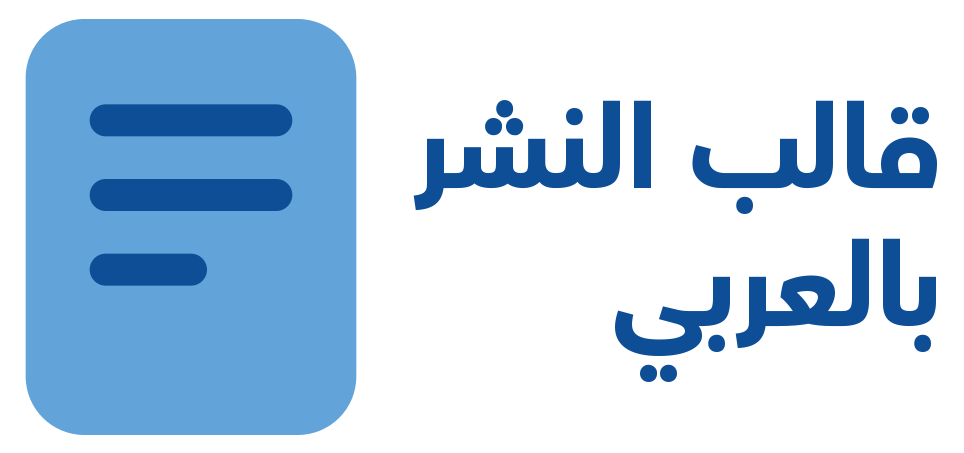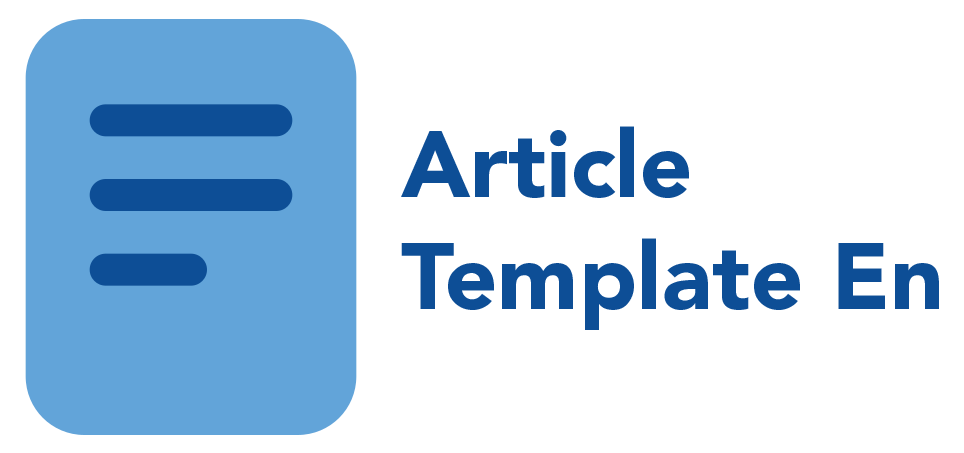مهام هيئة تحرير
أولًا: المهام التنظيمية والإدارية
• إعداد الخطة السنوية للمجلة بما يشمل تحديد أولويات النشر والمحاور البحثية والمواعيد الزمنية للإصدار، إلى جانب تنسيق العمل بين مختلف الوحدات التحريرية، مثل وحدات التحرير والتحكيم واللغة والإخراج الفني.
• إعداد ومراجعة السياسات العامة للمجلة، بما في ذلك سياسة النشر، وسياسة التحكيم، وآليات التعامل مع الانتحال، وأخلاقيات النشر العلمي، مع تحديثها بشكل دوري لضمان مواكبتها للمعايير الوطنية والدولية.
• الإشراف على جدول الإصدار من خلال ضمان الالتزام بالمواعيد المحددة لنشر المجلة (مرتان في السنة)، ومراجعة جاهزية المواد العلمية للنشر ضمن الإطار الزمني المعتمد.
ثانيًا: المهام الأكاديمية والعلمية
• إجراء تقييم مبدئي للأبحاث المستلمة من خلال فحص مدى توافقها مع نطاق وتخصص المجلة، والتحقق من استيفائها للشروط الشكلية والمعايير العلمية العامة.
• إحالة الأبحاث المستوفية للتحكيم عبر اختيار محكمين متخصصين مؤهلين، مع التأكد من عدم وجود تضارب مصالح، ومتابعة استلام تقارير التحكيم ضمن المهلة المحددة.
• اتخاذ القرار النهائي بشأن النشر بعد دراسة تقارير المحكمين، ومراجعة استجابات الباحثين للملاحظات، تمهيدًا لإصدار قرار نهائي بقبول البحث أو قبوله بعد التعديل أو رفضه أو إحالته إلى محكم ثالث.
• التواصل مع المؤلفين لإعلامهم بنتائج التحكيم، وتوجيههم لإجراء التعديلات المطلوبة، ثم إرسال رسائل القبول الرسمية بعد التأكد من استيفاء جميع الشروط.
ثالثًا: المهام المرتبطة بضمان الجودة
• ضمان جودة المحتوى العلمي المنشور من خلال الالتزام بالمعايير الأكاديمية وأخلاقيات البحث العلمي، مع المتابعة الدقيقة للتوثيق والأسلوب العلمي وسلامة اللغة المستخدمة في الأبحاث.
• إجراء فحص إلكتروني لكشف الانتحال لضمان خلو البحوث من أي انتهاكات لحقوق الملكية الفكرية أو استخدام غير موثق للمصادر.
• تقييم أداء المحكمين عبر بناء قاعدة بيانات محدثة للمحكمين الفاعلين، ورصد مدى التزامهم بالمواعيد وجودة تقاريرهم، واستبعاد من لا يلتزم بمعايير التحكيم المعتمدة.
• تحسين جودة المجلة بصورة مستمرة من خلال العمل على إدراجها في قواعد البيانات المحلية والدولية، واعتماد نظام المعرف الرقمي (DOI) للمقالات، وتطوير موقعها الإلكتروني لتيسير الوصول إلى محتواها العلمي.
رابعًا: المهام التنسيقية والإعلامية
• التنسيق مع الهيئة الإستشارية للمجلة من خلال عرض بعض الأبحاث على المستشارين عند الحاجة، والاستفادة من آرائهم في قضايا النشر والتطوير الاستراتيجي للمجلة.
• بناء شبكة علاقات علمية فعالة للمجلة عبر التعاون مع مجلات ومؤسسات بحثية وجامعات، وتشجيع مشاركة باحثين من خارج الجامعة بهدف رفع التصنيف وتعزيز التنوع العلمي.
• الإشراف على عملية النشر الورقي والإلكتروني بالتنسيق مع مسؤولي التصميم والإخراج الفني، مع مراجعة النسخة النهائية والتحقق من اكتمال بيانات النشر.
• الترويج العلمي للمجلة، وتحفيز مشاركة الباحثين المحليين والدوليين.
خامسًا: المهام القانونية والأخلاقية
• ضمان الالتزام بأخلاقيات النشر من خلال التعامل الجاد مع الشكاوى والانتهاكات مثل الانتحال وتضارب المصالح والتكرار، وتفعيل سياسة السحب أو التصحيح عند الضرورة لضمان نزاهة المحتوى العلمي.
• حفظ السجلات والمراسلات عبر أرشفة تقارير التحكيم والمراسلات الرسمية ونماذج الموافقة، مع ضمان توفير هذه الوثائق عند الحاجة لأغراض التدقيق أو الاعتماد الأكاديمي.
• المتابعة مع الجهات الرقابية من خلال إعداد وتقديم تقارير دورية عن أداء المجلة لإدارة الجامعة والجهات ذات العلاقة، والمساهمة في استيفاء متطلبات الاعتماد البرامجي والمؤسسي.
سادسًا: التقييم والتطوير
• إجراء تقييم دوري لأداء المجلة يشمل جودة النشر، وكفاءة التحكيم، ومستوى التفاعل العلمي.
• اقتراح آليات تطوير مستمرة عبر إدخال أدوات حديثة في عملية النشر مثل الذكاء الاصطناعي وإدارة المحتوى.
• متابعة مؤشرات الأداء الرئيسية للمجلة مثل عدد الأبحاث المستلمة، ونسبة القبول، والزمن المتوسط بين استلام البحث ونشره، لتحسين الأداء واتخاذ القرارات الاستراتيجية.
مهام ومسؤوليات رئيس هيئة التحرير
• الإشراف العام على المجلة وضمان التزامها بمعايير النشر العلمي والأخلاقيات الأكاديمية.
• إدارة هيئة التحرير وتوزيع المهام وتحديد أولويات العمل في كل عدد.
• اعتماد سياسة التحكيم والنشر وتحديثها دوريًا بالتنسيق مع الجهات المختصة بالجامعة.
• المشاركة في اختيار المحكمين والمحررين والتأكد من التزامهم بالمعايير.
• متابعة استلام الأبحاث وتحكيمها واتخاذ القرار النهائي بالنشر أو الرفض.
• تمثيل المجلة رسميًا أمام الجهات الأكاديمية والبحثية داخل الجامعة وخارجها.
• ضمان إدراج المجلة في قواعد بيانات النشر الدولية والعمل على تحسين تصنيفها.
• الموافقة على إصدار العدد النهائي ورقيًا وإلكترونيًا بعد مراجعته بدقة.
• حل المشكلات الأكاديمية أو الأخلاقية التي قد تنشأ أثناء عملية النشر.
• إعداد تقارير دورية عن نشاط المجلة ومستوى أدائها ورفعها للجهات المعنية.
مهام ومسؤوليات عضو هيئة التحرير
• المشاركة في مراجعة الأبحاث الأولية وتحديد مدى توافقها مع تخصص المجلة.
• اقتراح أسماء المحكمين وفقًا لتخصص البحث وخلوه من تضارب المصالح.
• متابعة استلام تقارير التحكيم والتأكد من جودتها والتزامها بالمعايير.
• المساهمة في صياغة السياسات الداخلية للمجلة واقتراح تطويرها.
• الإشراف على أحد المحاور أو التخصصات في المجلة حسب اختصاصه العلمي.
• التواصل مع الباحثين والمحكمين بالنيابة عن المجلة عند الحاجة.
• المشاركة في تحرير ومراجعة النسخة النهائية قبل النشر.
• اقتراح سبل تحسين جودة المجلة علميًا وفنيًا وتنظيميًا.
• تمثيل المجلة في الفعاليات العلمية بالتنسيق مع رئيس هيئة التحرير.
• المشاركة في تقييم أداء المجلة دوريًا ورفع التوصيات التطويرية.







